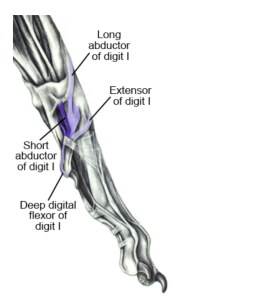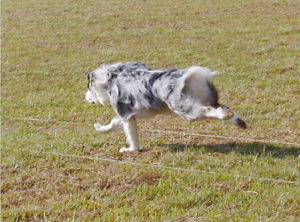Anytime you talk about removing something from a dog’s body, there is a debate about it. When it comes to dewclaws, however, most owners do not know much about them. Often removed by the breeder, they are gone before you take the puppy home, meaning you never really give them a second thought.
If you have dealt with them, your experiences may factor into how you feel about them. Some people swear their dog’s need them, others think of them as a nuisance.
What Are Dewclaws?
Simply put, dewclaws are small “toes” with a nail that are slightly up the leg, above their paw. Some dogs have front dewclaws, some have rear dewclaws, and some have both.
Many people think of them as “extra parts” like the appendix, being a toe that is too high off the ground to really do anything except be a pain to trim. But is that really true? Or do they serve a purpose?
Remove Them!
Those on the side of removing declaws believe it’s better to remove them than to have to worry about all the problems they can create, such as:
- Overgrown dewclaws – people forget to clip them
- Ingrown nails – often, the dew claw is very close to the skin, making it easy for it to get ingrown
- Infections – just like regular toenails, the dewclaw can get infected. Because they are hidden, owners are less likely to notice until the infection is really bad.
- Torn off – probably the worst thing that can happen, dogs can catch their dewclaws on things and actually tear them off. This is a bloody and painful injury.
Dixie Bickham-Eignrauch, is a Shetland sheepdog breeder and a fostermom for a Sheltie rescue. She removes the dewclaws on all her puppies because she has seen too many horrific dewclaw injuries in the rescues. One she had was so badly grown into the leg he required surgery.
“Occasionally dewclaws are not well attached and essentially dangle from the dog’s wrist, making it very easy for them to get caught on something and rip off,” explains Kate Connell, CPDT-KA, owner of Calmer Canines. “I have found that this is more common in rear dewclaws, which only some dogs have. If a dog has dangling dewclaws when it is born, then I might recommend removing them at that time as removal as an adult is much riskier [due to anesthesia].”
Keep Them!
Another sheltie breeder, Debby Gayton, only removes the back (if her puppies have them) because her vet cautioned her about them getting caught and torn off. She says she keeps the front ones because they make the front legs look fuller (for conformation shows) and she has noticed her dog’s use them rub their eyes.
And finally, another sheltie breeder and professional groomer, Serena Marshall, never removes any dewclaws because she knows the dogs use them.
“As a groomer I do see dogs with neglected dewclaws, but generally the dog has been neglected as a whole,” says Marshall. “Personally, with all my dogs do, I’ve never had a dewclaw be a problem or get caught on something.”
Perhaps the most compelling information, however, comes from Dr. Christine Zink, DVM, PhD, DACVSMR. She is a consultant on canine sports medicine who designs individualized rehabilitation and conditioning programs for canine athletes. In 2009, she was awarded the Woman Veterinarian of the Year.
Her article “Do the Dew(claws)?” shows that, in fact, those front dewclaws have a function. She asks you to look at a dog’s anatomy picture and notice that there are “2 major, functioning tendons attached to the [front] dewclaws. Of course, at the other end of a tendon is a muscle, and that means that if you cut off the dew claws, there are major muscle bundles that will become atrophied from disused.”

Dr. Zink explains that “Those muscles indicate that the dewclaws have a function. That function is to prevent torque on the leg.”
As you can see in the other image she provides, the dewclaw does indeed touch the ground when the dog is running. Dr. Zink says it digs into the ground to support the lower leg, thereby preventing torque.

“If the dog doesn’t have a dewclaws, the leg twists. A lifetime of that and the result can be carpal arthritis, or perhaps injuries to other joints, such as the elbow, shoulder, and toes,” she explains. (Source: CanineSports.com)
While the vast majority of dogs go through life without their dewclaws and seem fine, Dr. Zink cautions that this could be because dog’s really do have a higher pain tolerance than us and do not necessarily “complain” about mild arthritic discomfort.
It does seem, however, that the dewclaw does in fact serve a purpose and, especially for those of you who compete in field events, you may wish to keep those dewclaws. If you do a sport like flyball or even agility, however, it may be safer to remove them than risk getting them torn off. It’s always good to tell your vet the plans you have for your puppy and then get their opinion as well as the breeders.
About the Author
Based in Wilsonville, Ore., animal lover Kristina N. Lotz is a Certified Professional Dog Trainer – Knowledge Assessed (CPDT-KA) and works as a full time trainer. She also owns her own custom pet products company, A Fairytail House, where she makes personalized collars, leashes, beds, keepsake pillows and blankets, and anything else your imagine can think up. In her spare time, she trains and competes in herding, agility, obedience, rally, and conformation with her Shetland Sheepdogs. She smartly married a Veterinary Technician, who helps keep the fur kids happy and healthy, and provides a quick resource for articles.
 Toledo, United States.
Toledo, United States.
